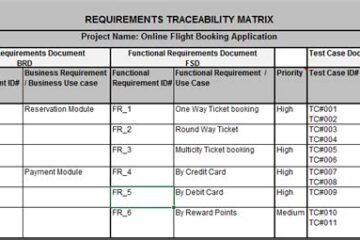Introduction
Rogers Corporation, a global leader in engineered materials solutions, has released a new waterproof flexible heater substrate designed specifically for flex heater applications. This innovative product, named the ARLON® WaterShed™ Series, offers superior moisture resistance and flexibility compared to traditional heater substrates, making it ideal for use in a wide range of industries and applications.
What is a Flex Heater?
A flex heater, also known as a flexible heater or a thin film heater, is a type of heating element that consists of a thin, flexible substrate with a conductive material printed or laminated onto its surface. When an electrical current is applied to the conductive material, it generates heat through resistive heating. Flex heaters are commonly used in applications where space is limited, or where the heater needs to conform to a specific shape or surface.
Advantages of Flex Heaters
Flex heaters offer several advantages over traditional rigid heaters:
-
Flexibility: Flex heaters can conform to complex shapes and surfaces, making them suitable for applications where a rigid heater would not fit or would be impractical to use.
-
Thin profile: Flex heaters are typically very thin, often less than 1 mm thick, which allows them to be used in space-constrained applications.
-
Lightweight: Due to their thin profile and flexible substrate material, flex heaters are generally lightweight, making them easy to install and reducing the overall weight of the end product.
-
Uniform heating: Flex heaters can provide even and uniform heating across their surface, ensuring consistent temperature distribution.
-
Customizable: Flex heaters can be designed and manufactured to meet specific size, shape, and power requirements, making them highly customizable for various applications.

Industries and Applications
Flex heaters find use in a wide range of industries and applications, including:
-
Medical: Flex heaters are used in medical devices such as patient warming blankets, surgical equipment, and diagnostic instruments.
-
Aerospace: In the aerospace industry, flex heaters are used for anti-icing and de-icing of aircraft surfaces, as well as for temperature regulation of sensitive electronic components.
-
Automotive: Flex heaters are used in automotive applications such as seat heaters, steering wheel heaters, and battery heaters for electric vehicles.
-
Consumer electronics: Flex heaters are used in consumer electronic devices such as smartphones, tablets, and wearable technology for temperature regulation and anti-fog functions.
-
Industrial: In industrial settings, flex heaters are used for process heating, temperature maintenance, and freeze protection in pipes and tanks.
Challenges with Traditional Flex Heater Substrates
While flex heaters offer many benefits, traditional flex heater substrates have some limitations, particularly in environments where moisture and humidity are present. Some of the challenges with traditional substrates include:
-
Moisture absorption: Many traditional flex heater substrates, such as polyimide and polyester, can absorb moisture over time, leading to degradation of the heater’s performance and potential failure.
-
Limited flexibility: Some substrates become brittle or less flexible when exposed to moisture, which can cause cracking or delamination of the conductive heating element.
-
Reduced dielectric strength: Moisture absorption can also reduce the dielectric strength of the substrate, increasing the risk of electrical breakdown and heater failure.
Rogers’ ARLON® WaterShed™ Series
To address the challenges associated with traditional flex heater substrates, Rogers has developed the ARLON® WaterShed™ Series – a new waterproof flexible heater substrate specifically designed for flex heater applications.
Key Features and Benefits
The ARLON® WaterShed™ Series offers several key features and benefits:
-
Waterproof: The substrate is designed to be highly resistant to moisture absorption, maintaining its dielectric strength and performance even in humid or wet environments.
-
Flexible: The WaterShed™ Series maintains its flexibility even after exposure to moisture, ensuring that the flex heater can conform to the desired shape or surface without cracking or delamination.
-
High dielectric strength: The substrate offers a high dielectric strength, reducing the risk of electrical breakdown and heater failure.
-
Wide temperature range: The WaterShed™ Series can operate in a wide temperature range, from -40°C to 150°C, making it suitable for a variety of applications.
-
UL recognized: The substrate is UL recognized under file number E122972, providing customers with the assurance of safety and reliability.
Comparison with Traditional Substrates
The table below compares the key properties of the ARLON® WaterShed™ Series with traditional polyimide and polyester flex heater substrates:
| Property | ARLON® WaterShed™ Series | Polyimide | Polyester |
|---|---|---|---|
| Moisture Absorption (%) | <0.5 | 2.5-3.0 | 0.8-1.0 |
| Dielectric Strength (kV/mm) | >20 | 18-20 | 16-18 |
| Flexibility after Moisture Exposure | Excellent | Fair | Good |
| Temperature Range (°C) | -40 to 150 | -40 to 150 | -20 to 120 |
| UL Recognition | Yes | Yes | Yes |
As seen in the table, the ARLON® WaterShed™ Series offers superior moisture resistance, dielectric strength, and flexibility compared to traditional polyimide and polyester substrates.
Applications for the ARLON® WaterShed™ Series
The ARLON® WaterShed™ Series is well-suited for flex heater applications in industries and environments where moisture resistance is critical, such as:
-
Outdoor electronics: Flex heaters used in outdoor electronic enclosures, such as telecommunications equipment and digital signage, can benefit from the moisture resistance of the WaterShed™ Series.
-
Marine and underwater equipment: Flex heaters used in marine and underwater applications, such as boat and submersible vehicle heating, can take advantage of the waterproof properties of the WaterShed™ Series.
-
Medical devices: Medical devices that require flex heaters, such as patient warming blankets and surgical equipment, can benefit from the moisture resistance and reliability of the WaterShed™ Series.
-
Aerospace and defense: Flex heaters used in aerospace and defense applications, such as anti-icing and de-icing systems, can rely on the WaterShed™ Series for consistent performance in harsh environments.
-
Industrial process heating: Flex heaters used in industrial process heating applications, such as pipeline and tank heating, can benefit from the waterproof and durable properties of the WaterShed™ Series.
Designing with the ARLON® WaterShed™ Series
When designing flex heaters using the ARLON® WaterShed™ Series substrate, engineers should consider the following factors:
-
Heater size and shape: The size and shape of the flex heater should be designed to fit the specific application and to provide the desired heating performance.
-
Power density: The power density of the flex heater, measured in Watts per square inch (W/in²), should be selected based on the heating requirements of the application and the limitations of the substrate and conductive materials.
-
Conductive materials: The choice of conductive materials, such as silver, copper, or carbon, should be based on the desired electrical and thermal properties, as well as compatibility with the WaterShed™ Series substrate.
-
Electrical connections: The electrical connections to the flex heater should be designed to ensure reliable power delivery and to minimize the risk of failure due to moisture or mechanical stress.
-
Thermal management: Proper thermal management, such as the use of insulation materials and temperature sensors, should be considered to ensure safe and efficient operation of the flex heater.
Rogers offers design support and technical assistance to help customers effectively incorporate the ARLON® WaterShed™ Series substrate into their flex heater designs.
FAQ
1. What is the maximum operating temperature of the ARLON® WaterShed™ Series substrate?
The ARLON® WaterShed™ Series substrate can operate in a temperature range of -40°C to 150°C.
2. Is the ARLON® WaterShed™ Series substrate UL recognized?
Yes, the ARLON® WaterShed™ Series substrate is UL recognized under file number E122972.
3. How does the moisture resistance of the ARLON® WaterShed™ Series compare to traditional polyimide and polyester substrates?
The ARLON® WaterShed™ Series substrate has a moisture absorption rate of less than 0.5%, which is significantly lower than the 2.5-3.0% for polyimide and 0.8-1.0% for polyester substrates.
4. Can the ARLON® WaterShed™ Series substrate be used in medical applications?
Yes, the ARLON® WaterShed™ Series substrate is well-suited for medical applications that require flex heaters, such as patient warming blankets and surgical equipment, due to its moisture resistance and reliability.
5. What kind of design support does Rogers offer for customers using the ARLON® WaterShed™ Series substrate?
Rogers offers design support and technical assistance to help customers effectively incorporate the ARLON® WaterShed™ Series substrate into their flex heater designs, including guidance on heater size and shape, power density, conductive materials, electrical connections, and thermal management.
Conclusion
The ARLON® WaterShed™ Series waterproof flexible heater substrate from Rogers Corporation offers a new solution for flex heater applications in industries and environments where moisture resistance is critical. With its superior moisture resistance, high dielectric strength, and excellent flexibility, the WaterShed™ Series substrate addresses the limitations of traditional polyimide and polyester substrates, providing reliable performance in demanding conditions.
By designing flex heaters with the ARLON® WaterShed™ Series substrate, engineers can create innovative and reliable heating solutions for a wide range of applications, from outdoor electronics and marine equipment to medical devices and aerospace systems. As the demand for flexible and waterproof heating solutions continues to grow, the ARLON® WaterShed™ Series substrate is poised to play a significant role in shaping the future of flex heater technology.



0 Comments